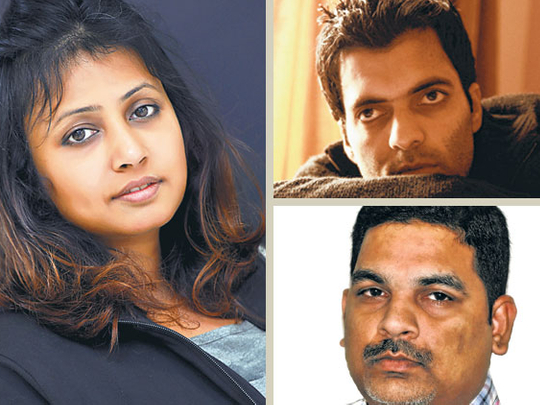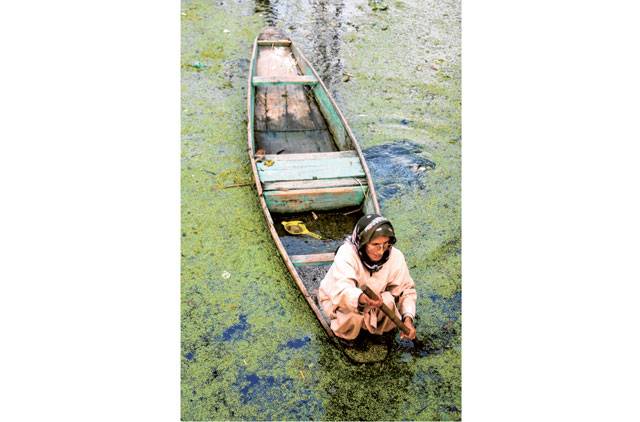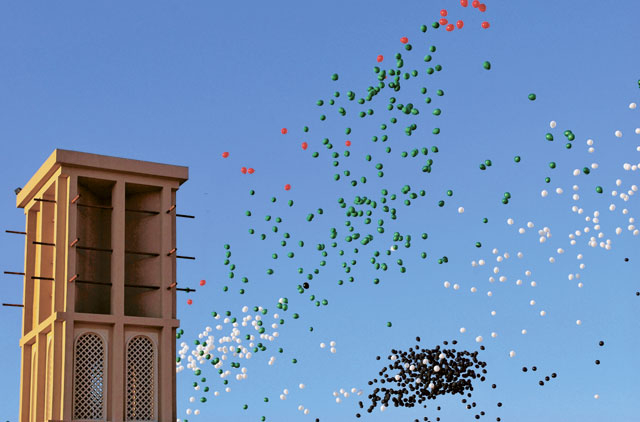
There are so many ways to convey a message and with photographs Gulf News readers proved that there are countless ways of expressing a feeling towards a subject.
For the month of December, that subject was the UAE.
Deputy Picture Editor Sankha Kar said: "Many of the pictures that were submitted were taken in the UAE. It shows how involved our readers are in their community."
One of the reasons behind these submissions was the UAE's 40th National Day. Gulf News received many photographs of what people think represents the UAE.
Kar added: "I saw so many portraits of UAE residents going about their daily lives."
It seems that Gulf News readers have also proved to be experts in the art of portrait photography.
Kar noticed that many of the portraits showed a lot of facial expression that had a story to tell.
He said: "You could see the people in their natural setting. If the person notices that a camera is facing them then it wouldn't be a candid shot and the picture would actually lose its uniqueness. You could always ask them for permission after taking the photo."
Experiment with all kinds of framing and compositions while shooting landscape pictures. Make sure you shoot both vertical and horizontal compositions of every scene you take. Sometimes vertical pictures come out better than their horizontal counterparts.
While shooting landscapes, most people do not think of lighting up their subject - they rely on whatever light is available. Only a few people wait for the magic hour — for the sun's rays to weave their magic by lengthening shadows and the golden light. Why not think of using some additional light sources like an automobile headlight, street lights, light from a campfire, etc?
More often than not you will find that when you reach a perfect scenic spot, there will always be some unwanted elements that are immovable and that spoil the shot. The best method to counter this situation is to figure out the most important elements in your scene, focus your attention on them and recompose your frame, excluding the unwanted elements from the scene entirely.
You could easily add an emotional touch to your image by making use of patterns or repetitions that naturally occur in Nature. Patterns or repetitions are to be found everywhere in Nature — you only need to take note.
A row of trees, a row of flowers, patterns of sand, etc, or while shooting urban landscapes, street lights, milestones, etc. One thing to keep in mind while making use of patterns is to compose in such a way that the patterns fill your frame. This will help emphasise them. Experiment by breaking the pattern with an additional element.
- Sankha Kar, Deputy Picture Editor
Suvriti Gupta
Picture published: December 20
PROFILE:Suvriti Gupta, an interior designer, was never fond of photography until she saw a professional's work.
She had arranged a photo shoot for one of her sites for work and was very impressed by the quality of photographs.
Gupta, a 36-year-old Indian national, said: "I had taken pictures with a point and shoot camera as well, but I could not figure out why the quality of my images was not even close to the photographer's pictures."
The desire to be able to take photographs of her designs on site sparked Gupta's interest in photography.
But this interest became a serious pursuit after Gupta took a trip to Ladakh, India - she said the breath-taking landscapes are still etched in her memory.Although she is still trying to pin down her favourite category to take pictures of, Gupta finds ceremonies and functions to be interesting.
She said: "These are precious moments which if captured with the right timing and aesthetic, can be a source of beauty and joy forever."
REASON FOR WINNING:Deputy Picture Editor Sankha Kar said: "Sand dunes, water, the human element and the reflection gave the picture its completeness. It is a very unusual and beautiful combination of subjects. The approach is also very good - the placement of the man and his motion added life to the picture."
Faisal Magray
Picture published: December 1
PROFILE:
Faisal Magray was born in 1989 in Srinagar, when insurgency in Kashmir took place.
He said: "The emergence of turmoil in Kashmir made me turn to photography. I wanted to cover all aspects of life in Kashmir."
The situation compelled Magray to focus on the daily protests, encounters and human rights violations in the region.
He added: "My interest lies mostly in war photography, portraits, abstracts and street shots."
However, he also loves taking pictures of the landscapes, culture, food and tourism of Kashmir.
When asked why he likes taking pictures, he said: "I enjoy the freedom that comes with photography."
REASON FOR WINNING: Deputy Picture Editor Sankha Kar said: "A picture that is taken from a different angle always attracts the viewers' eyes. The top angle and diagonal placement of the subject along with the expression of the woman made this picture attractive."
Prasad Babu
Picture published: December 9
PROFILE:
Prasad Babu, a 38-year-old Indian national, resides in Al Nahda, Sharjah.
Babu, an accountant, started taking random photographs of different subjects with his digital camera and realised that he had a passion for it.
Just like with any hobby, Babu started experimenting — with different angles and light sources. He even bought a Nikon D60.
He said: "The feedback that I received from my family and friends about my pictures was very encouraging. That's how my journey into photography started."
His three favourite subjects to take photographs of are children, flowers and animals.
He said: "You can take so many pictures from children's expressions - they come out so naturally. When it comes to flowers I find them quite relaxing to look at."
REASON FOR WINNING:
Deputy Picture Editor Sankha Kar said: "This picture creates a feel of freedom and happiness. The wind tower on the left hand corner, along with the vast blue sky and colourful balloons occupying two-thirds of the frame is the strongest part of the picture."











